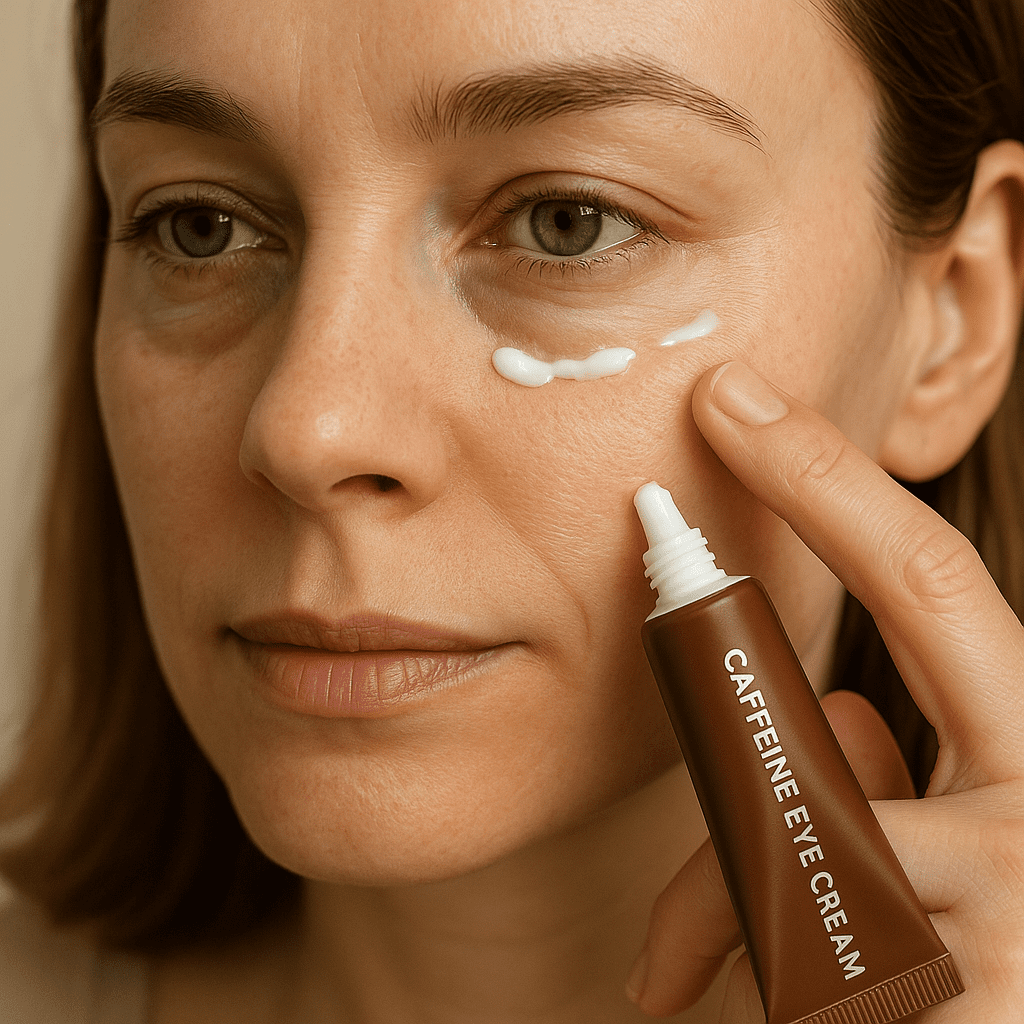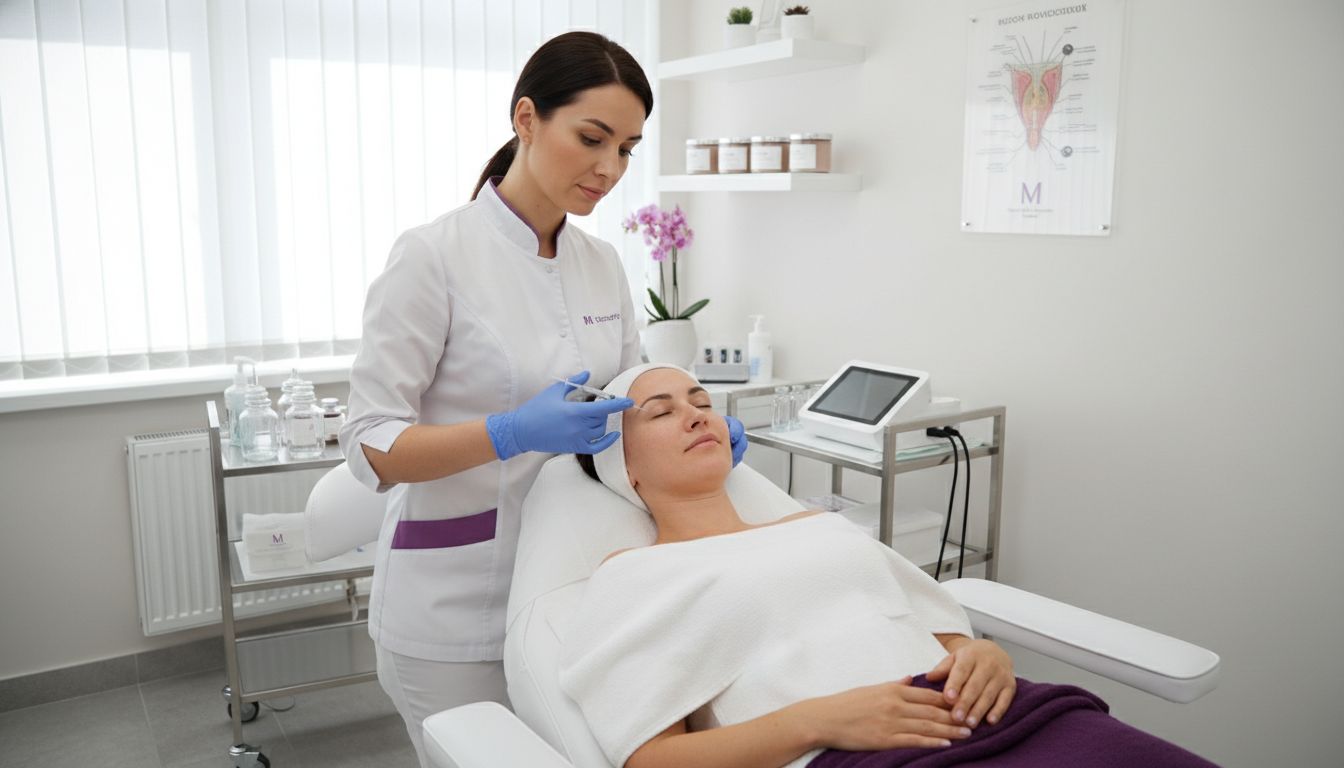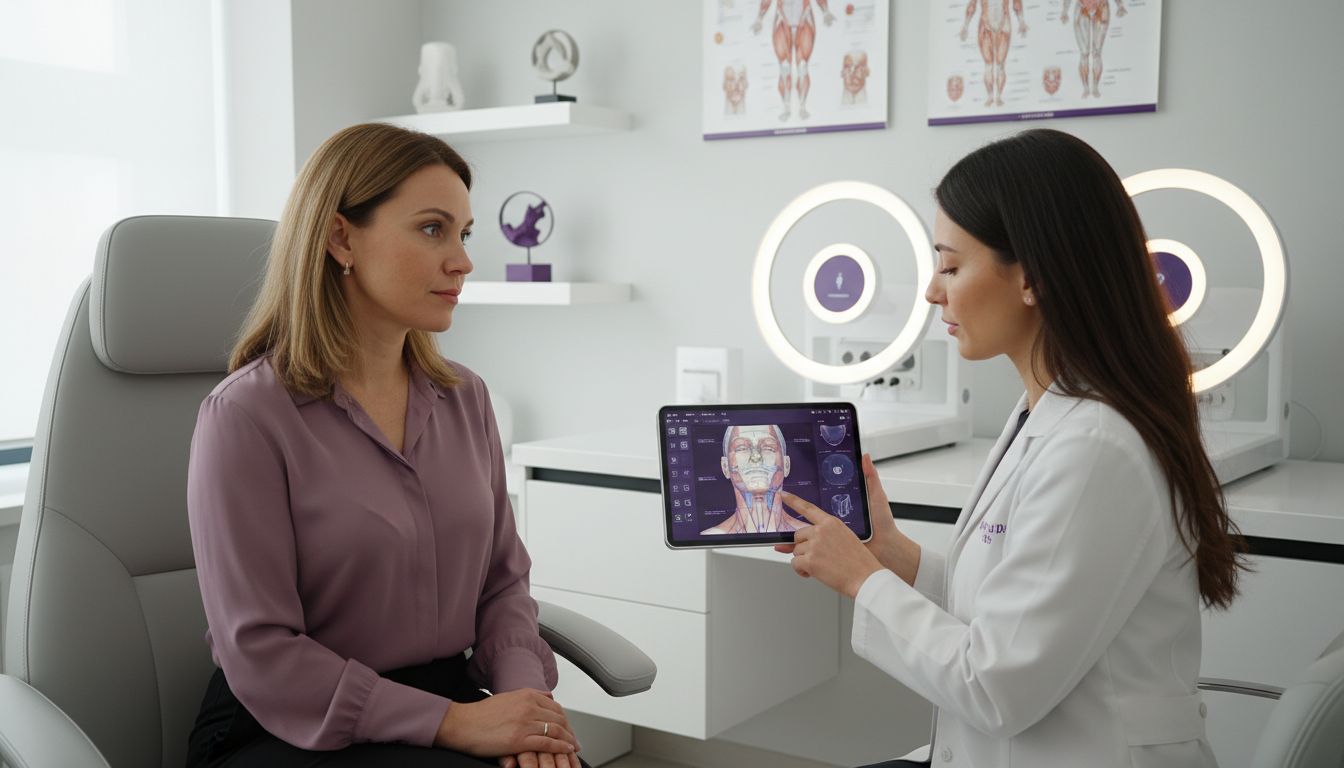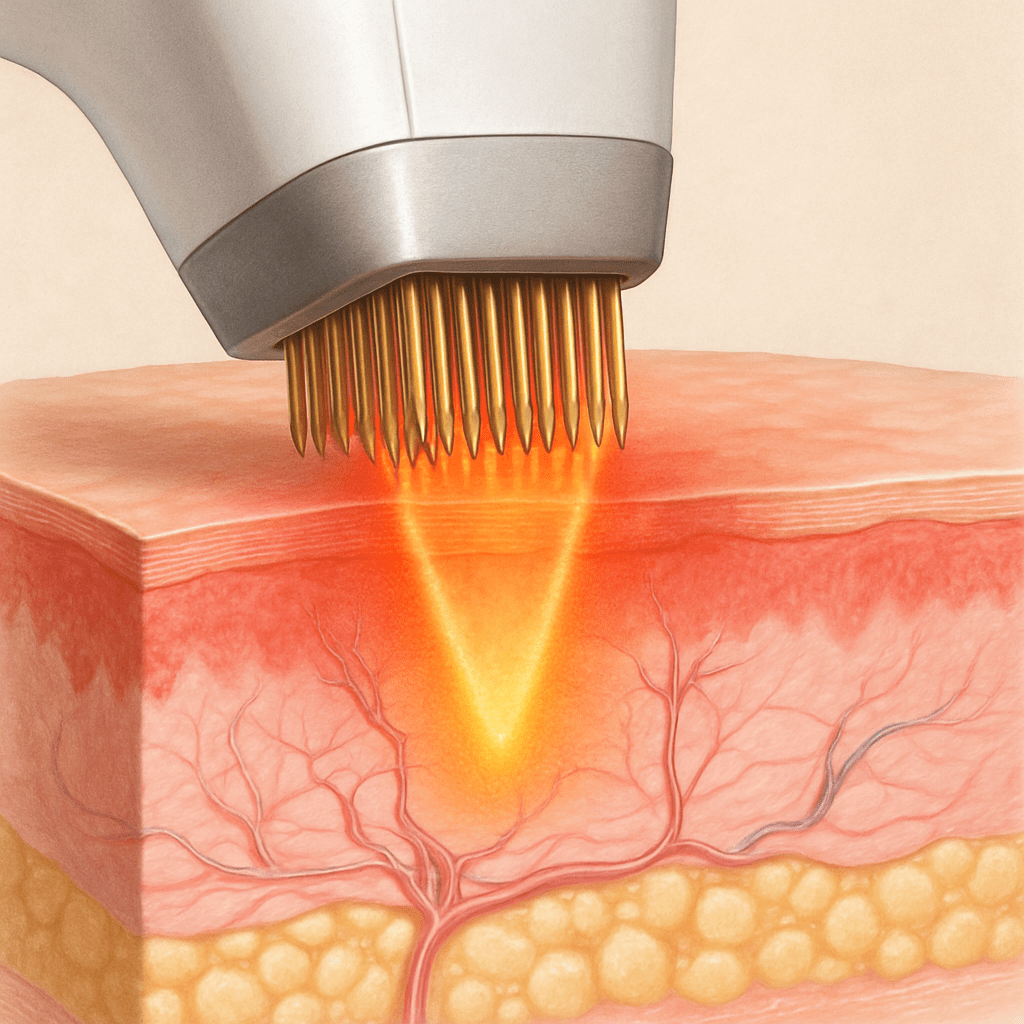Everyone knows under eye bags can make you look tired and older than you feel.
But what are they, exactly?
Here’s a complete guide with clear, actionable tips on how to reduce under eye bags without surgery.
Some are simple lifestyle hacks anyone can try.
Some are topical treatments proven by science.
Some are professional non-surgical options that provide lasting improvement.
Some cause your under eye puffiness, others soothe it away.
Let’s dive right in.
Table of Contents
- Why Do We Get Under Eye Bags?
- Can Under Eye Bags Be Treated Without Surgery?
- Lifestyle Changes to Reduce Under Eye Bags
- Topical Treatments That Help Puffiness
- Professional Non-Surgical Options
- Common Misconceptions About Under Eye Bags
- How to Choose the Right Treatment for You
- Frequently Asked Questions
- What’s Your Next Step?
Why Do We Get Under Eye Bags?
Understanding the cause is the first step to treating under eye bags without surgery.
Under eye bags occur due to a combination of factors. The most common cause is natural aging. As we get older, the skin loses elasticity and the muscles that support the eyelids weaken. This allows fat that normally supports the eyes to move into the lower eyelids, causing puffiness.
Other contributors include fluid retention, allergies, lack of sleep, excessive salt or alcohol intake, dehydration, genetics, and skin conditions like eczema.
Dr. Shaun Desai, a facial plastic surgeon, explains that this sagging and bulging of fat is why the bags form a bubble-like appearance under the eyes. Sometimes, dark discoloration accompanies the bags, making the eyes appear more tired or aged.
Knowing what triggers or worsens your under eye bags will help you select the most effective non-surgical treatments available.
Consider: Is your puffiness mostly due to fluid retention or permanent fat bulges? Do allergies worsen your eye bags? These questions determine your best path forward.
Can Under Eye Bags Be Treated Without Surgery?
Yes. While surgery (blepharoplasty) can permanently remove under eye bags by trimming excess skin and repositioning fat, many effective non-surgical options exist. These options may be better for mild to moderate puffiness or those who prefer less invasive approaches.
Non-surgical treatments include topical creams, lifestyle adjustments, and minimally invasive procedures like dermal fillers, laser therapy, and chemical peels. These methods can reduce puffiness, improve skin tone, and mask the appearance of bags without the risks and downtime of surgery.
Studies and expert opinions highlight that some non-surgical treatments might need to be repeated to maintain results, but they offer immediate to medium-term improvements that are appealing for many.
Johns Hopkins Medicine details these options thoroughly, focusing on the safety and effectiveness of treatments.
Lifestyle Changes to Reduce Under Eye Bags
Before jumping into treatments, assess your lifestyle habits. Many simple changes can significantly reduce under eye puffiness.
Get Sufficient Sleep
While lack of sleep may not cause bags directly, it can make your complexion paler, enhancing the visibility of shadows and bags. Aim for 7-8 hours of quality sleep nightly.
Elevate Your Head While Sleeping
Sleeping with your head elevated on extra pillows helps prevent fluid build-up around the eyes. If traditional pillows hurt your neck, try sleeping on a wedge pillow or elevating the bed frame slightly.
Stay Hydrated
Dehydration leads to puffiness as your body retains water to compensate. Drinking enough water daily (6-12 cups depending on individual needs) keeps the skin plump and reduces puffiness. If plain water is dull, try flavored waters or herbal teas.
Reduce Salt and Alcohol Intake
High salt causes fluid retention and worsens puffiness. Alcohol dehydrates the body and makes under eye bags more prominent. Limit consumption to recommended guidelines: generally less than 2,300 mg of sodium daily and moderate alcohol use.
Manage Allergies
Allergies cause inflammation, watery eyes and under eye puffiness. Over-the-counter antihistamines or prescribed allergy medications can help. Avoid allergens when possible and consider allergy testing if symptoms are persistent.
Quit Smoking
Smoking depletes vitamin C, reducing collagen strength and accelerating skin aging. Quitting supports skin health and greatly improves the appearance of the delicate eye area.
Changing lifestyle habits is a natural, cost-effective way to improve your eye area and overall health simultaneously. They form the foundation before considering topical or professional treatments.
Did you know? Elevating your head while you sleep can reduce eye puffiness noticeably by preventing fluid pooling.
Topical Treatments That Help Puffiness
Many people turn to creams and serums for a quick fix. While products cannot permanently remove fat bulges, the right ingredients can improve skin texture, tone, and reduce inflammation.
Retinol
Retinol, a vitamin A derivative, boosts collagen production and thickens thin under-eye skin, reducing the shadow effect and smoothing fine lines. Use once daily at night after cleansing. Avoid retinol if pregnant or breastfeeding.[Healthline]
Caffeine-Infused Creams
Caffeine is a vasoconstrictor that tightens blood vessels and reduces swelling. Green tea extract creams also offer antioxidants and anti-inflammatory benefits.
Skin-Lightening Ingredients
Hydroquinone reduces pigmentation, helping lighten dark circles that sometimes accompany eye bags. Use under dermatological supervision because prolonged sun exposure can reverse benefits.
Cold Compresses and Tea Bags
Applying a cold compress or chilled green tea bags constricts blood vessels and temporarily reduces puffiness. Always wrap cold items in a soft cloth to protect delicate eye skin.
Regularly incorporating these topical treatments combined with healthy habits maximizes results.
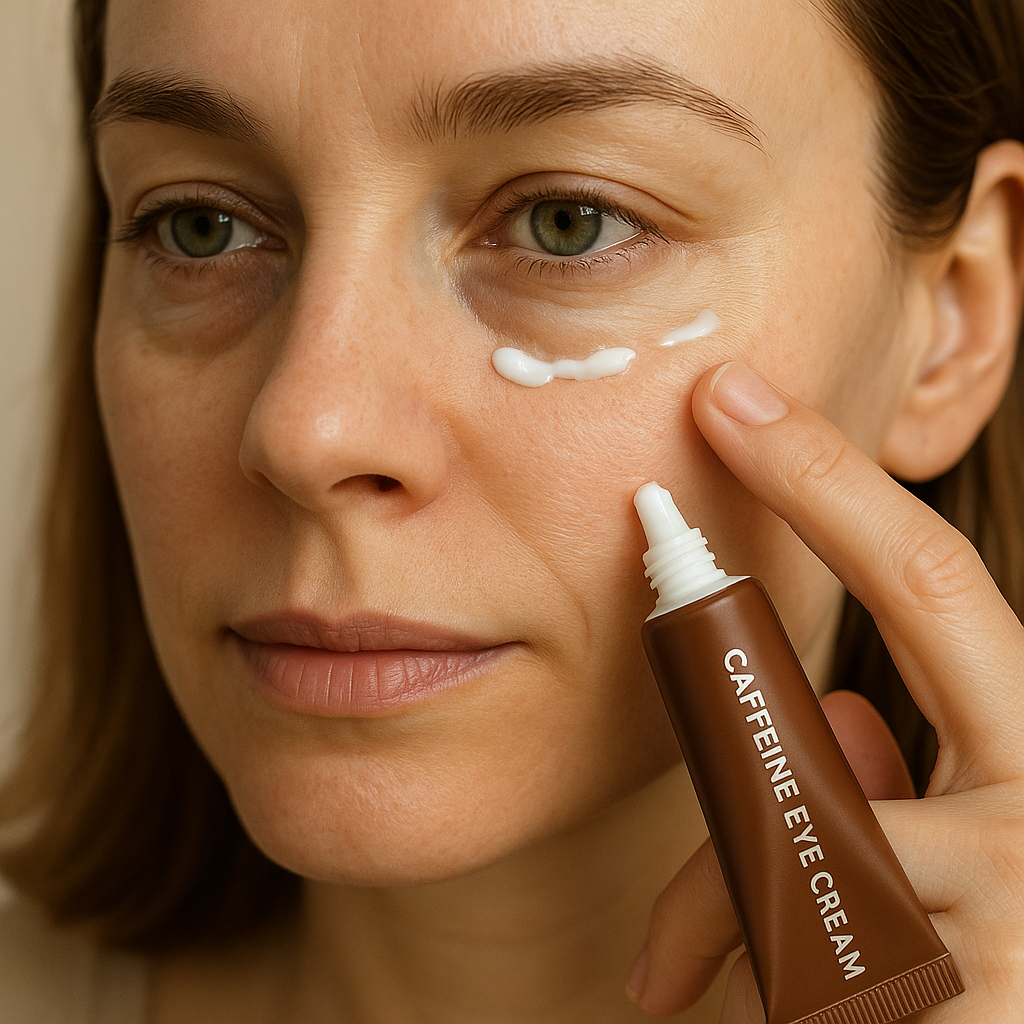
Professional Non-Surgical Options
For more persistent or prominent under eye bags, professional treatments offer powerful improvements without surgery. These can be tailored based on your anatomy and condition.
Tear Trough Fillers
Injectable dermal fillers like Restylane can fill hollow areas under the eyes (tear trough), reducing shadowing and the appearance of puffiness. Fillers create a smooth transition between the lower eyelid and cheek, masking bags without removal of fat. This procedure is quick, with minimal discomfort and downtime.[Dr. Biesman]
Laser Skin Resurfacing and Chemical Peels
Lasers tighten skin, improve tone, and stimulate collagen production while chemical peels remove damaged skin layers. These treatments reduce wrinkles and firm the skin under eyes, improving puffiness and discoloration.
Note: People with darker skin should consult specialists to avoid pigmentation changes caused by lasers.
Microneedling and Radiofrequency
Microneedling creates controlled micro-injuries stimulating natural healing and collagen renewal. Radiofrequency treatments tighten and lift skin by heating deeper layers. Both methods improve skin laxity and texture under eyes.
Professional Advice and Customization
Choosing the best non-surgical option depends on the nature and severity of your under eye bags. Combining treatments, like filler with laser or topical serums, might give optimal results.
Expert consultation ensures tailored care, safety, and the best outcome for your unique needs.
Common Misconceptions About Under Eye Bags
Let’s clear up some myths so you don’t waste time or risk ineffective treatments.
- Myth: Lack of sleep alone causes permanent under eye bags. Sleep is a factor but aging, genetics, and lifestyle play bigger roles.
- Myth: All under eye puffiness is fat that must be surgically removed. Sometimes puffiness is fluid or skin laxity treatable without surgery.
- Myth: Eye creams can completely get rid of bags. Creams help but won’t remove fat bulges or significantly tighten skin alone.
- Myth: Surgery is the only way to have youthful under eye skin. Many cases respond well to non-surgical approaches.
Choosing the right treatment based on cause yields better results and satisfaction.
Are you focusing on treating the root cause of your under eye bags?
How to Choose the Right Treatment for You
Follow these steps to make an informed decision about managing under eye bags without surgery:
- Identify the primary cause. Is it fluid retention, allergies, aging skin, fat bulging, or genetics?
- Start with lifestyle changes. Sleep better, hydrate, reduce salt and alcohol, manage allergies, and quit smoking.
- Incorporate topical treatments. Use retinol, caffeine creams, and apply sunscreen daily to protect delicate skin.
- Consult a qualified cosmetic specialist. They can assess your anatomy and recommend customized non-surgical options like fillers or laser treatment.
- Understand the pros and cons of treatments. Fillers offer quick results but are temporary. Laser treatments stimulate lasting collagen but require maintenance.
- Create a treatment plan. Sometimes a combination approach brings optimal, natural-looking results.
Deciding carefully avoids unnecessary expenses and risks while maximizing your rejuvenation journey.
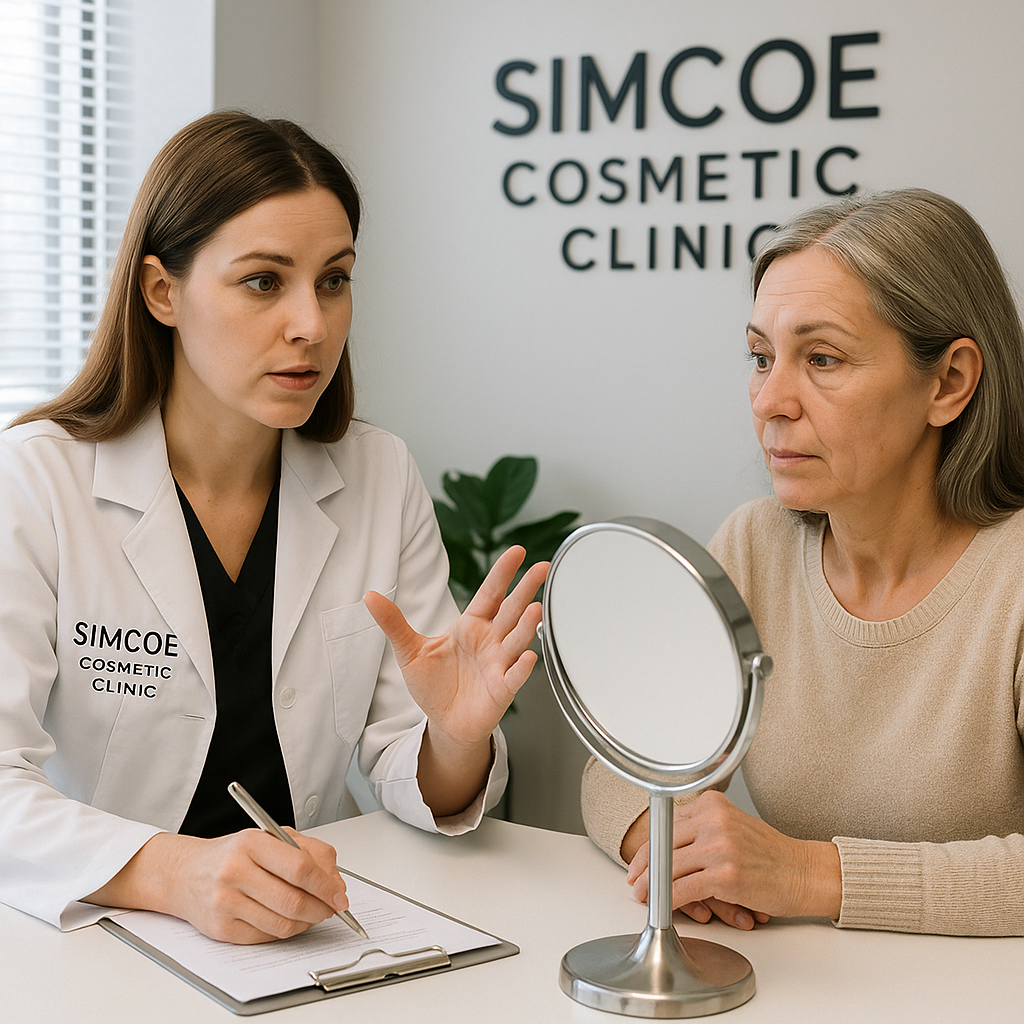
Frequently Asked Questions
What causes under eye bags to worsen during the day?
Fluid retention often accumulates when sitting or standing long periods, making puffiness more noticeable by day’s end.
Can diet really affect under eye bags?
Yes. Consuming excess salt and alcohol promotes fluid retention. Eating antioxidant-rich foods supports skin health.
Are dark circles the same as under eye bags?
No. Dark circles are pigmentation or shadow issues, while bags are usually skin laxity or fat bulging. They often occur together but need separate treatments.
How long do tear trough fillers last?
Typically 1-3 years, depending on the product and individual metabolism.
Is it safe to use retinol near eyes?
Use products specifically formulated for the eye area and start with low concentrations. Avoid if pregnant or nursing.
Can I do anything to prevent under eye bags?
Maintain good sleep, hydration, protect skin from sun, avoid smoking, and manage allergies to slow their development.
What’s Your Next Step?
Tell us in the comments: How will you apply these tips on how to reduce under eye bags without surgery?
For more expert guides on non-surgical skin rejuvenation and cosmetic care, be sure to explore our blog at Simcoe Cosmetic Clinic.
(Verified with sources as of 2025-10-01)
References:

